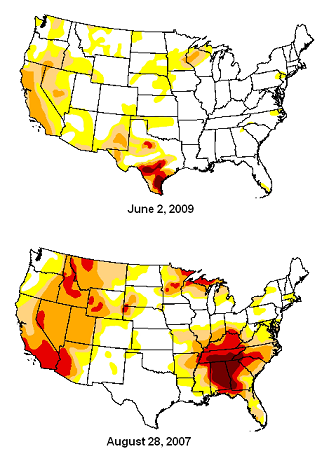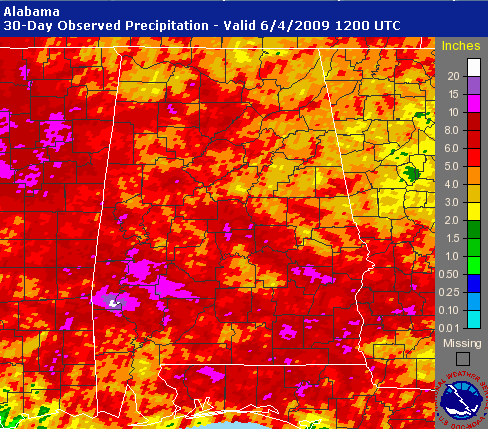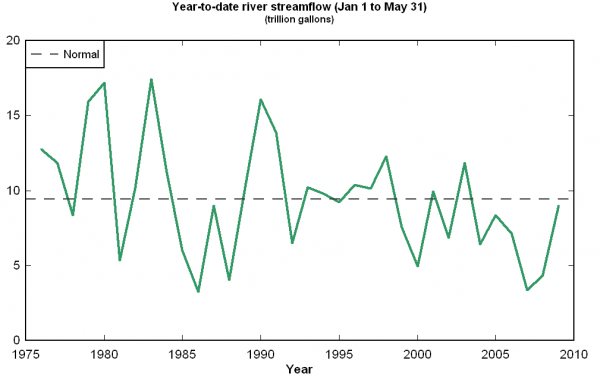Drought gone!
It’s not like you needed me nor the government to tell you, but the drought is now officially over for practically all of the Southeastern United States. Even in Florida, the drought is mainly gone due to heavy rains last week. Compare this week’s lack of drought over the Southeast to August 28, 2007, when most of Alabama was in a stage 4 drought.
The rains have continued into May and early June. So far this year, the Birmingham Airport has received 26.39″ of rain, near normal. But, that doesn’t tell the whole story. Jefferson and Shelby counties have been drier than most of the state, with most of central Alabama receiving 30″ or more of rain so far this year. Some places have gotten close to 40″.
If you look back at a post from earlier this year (Click here), you’ll see that huge amounts of water have been flowing out of Alabama’s rivers and into the Gulf.
The following table shows the total streamflow per day since 2007 past Coffeeville (on the Tombigbee River) and Monroeville (on the Alabama River) combined.
Most of the water in the rivers in Alabama (except for the Tennessee River Watershed) flows past these two points, including the Tombigbee, Warrior, Coosa, Cahaba, Tallapoosa, Alabama, and Sipsey Rivers. You can see the dry period in 2007, rains picking up in early 2008, then big rains this year.
Interestingly, despite our rainy spring, the river flows have not been abnormally high. So far this year, about 9 trillion gallons of water have flowed into the Gulf out of these river systems. But, looking back at the January to May period for years since 1978, this year’s flow is not above the 9.4 trillion gallons that are normal.
This is partially due to the recent drought. Much of the rain has replenished the water table and filled up the lakes instead of flowing into the Gulf, as confirmed to me this week by William Psinakis of the Alabama USGS office.
This is good news, since now we are in good shape with water, and even if we have a dry summer this year, it won’t affect us as much as it did in 2007. For example, Smith Lake is at 510 feet today, while it was at 490 feet in late 2007. Since Smith Lake is 21,200 acres, that represents 140 billion more gallons of water than in late 2007 in that lake alone!
We have great water resources in Alabama, and we should be thankful for them.
Category: Pre-November 2010 Posts



















